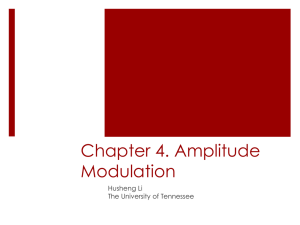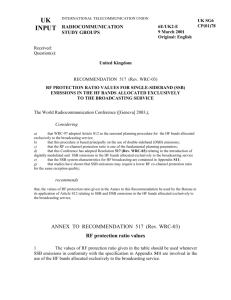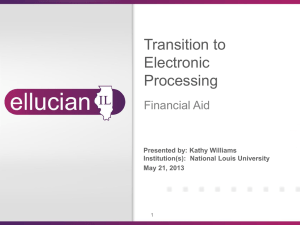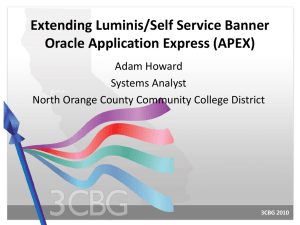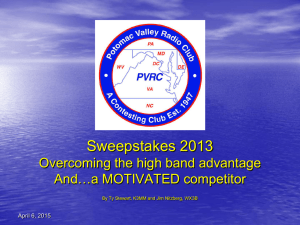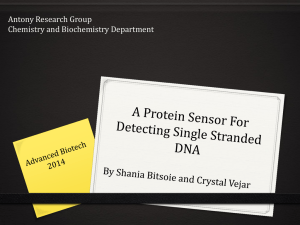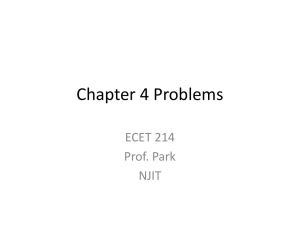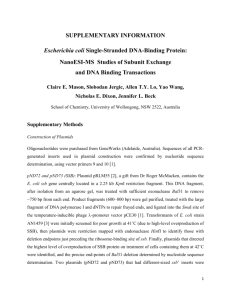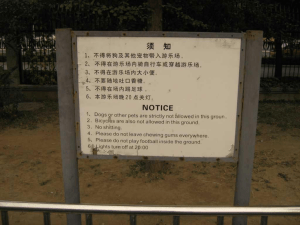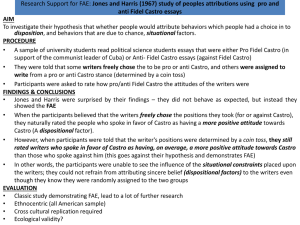The SSB Revolution
advertisement
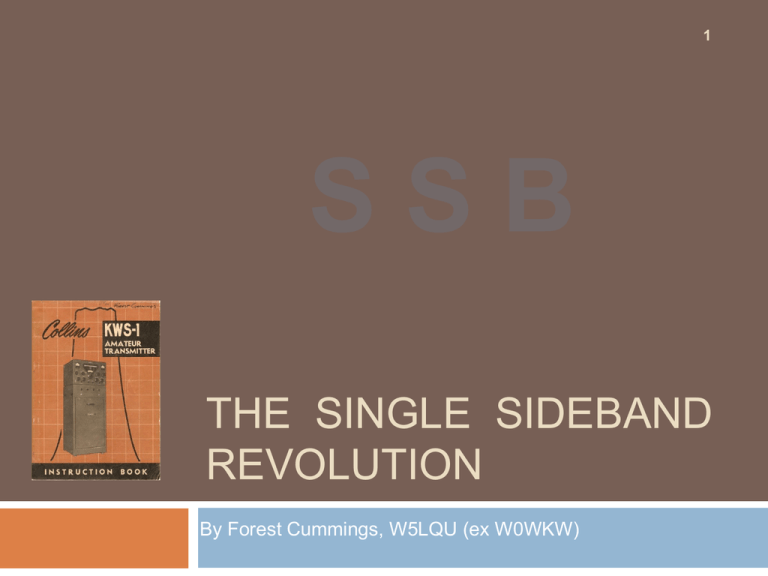
1 SSB THE SINGLE SIDEBAND REVOLUTION By Forest Cummings, W5LQU (ex W0WKW) A LITTLE HISTORY 2 Think back to the early 1950s. No transistors, internet, computers or transceivers. AM was the voice mode of ham radio along with many heterodynes, selective fading, and 6 KHz bandwidth. Collins Amateur radio equipment then was the 32V-3, 75A-3, and the KW-1 But, Collins realized that single sideband was coming. There were some commercial users, and when I joined Collins in 1953, there was already a SSB Study in progress. A special group was investigating the Techniques and Requirements for SSB SSB had no carrier, required only 3 KHz bandwidth, and provided about 9 to 12 dB increase in talk power for a given power amplifier But, SSB required stable frequencies and very good filters. Collins had both; the PTO and Mechanical Filters SSB REQUIREMENTS 3 Collins studied SSB and reported on Techniques and Requirements needed for SSB then used Ham Radio for SSB development : the KWS-1 and 75A-4. Key Factors for SSB were: Stability of the VFO and Selectivity (PTO and Mechanical Filters) Balanced Modulators and Product Detectors System Linearity of mixers and amplifiers Linear Power Amplifiers and intermodulation distortion 4 THE REPORT ON SINGLE SIDEBAND SSB AND COMPETITION 5 Central Electronics had marketed a 10 watt SSB exciter (10A) and the sideband slicer using a phasing method of generating the SSB signal. They called the sidebands 1 and 2. And Hams were using SSB very successfully. The Military (SAC) needed reliable long range communication for their operation in the polar regions (Cold War). Their interest in SSB precipitated several competitive modes to be proposed. Warren and I spent many hours on the road and at various meetings promoting the Collins SSB suppressed carrier approach Double Sideband Suppressed Carrier Single Sideband Reduced or Pilot Carrier Clip and restore SSB to utilize AM Transmitters Collins Single Sideband Suppressed Carrier “QUA” (I HAVE NEWS OF……) 6 “QUA” (I HAVE NEWS OF…...) HAM HISTORY: Over the years, the military and the electronics industry have often drawn on the ingenuity of radio amateurs to improve designs or solve problems. Hams provided the keystone for the development of modern military communication equipment, for example. In the 1950s, the Air Force needed to convert its long-range communication from Morse code to voice, and jet bombers had no room for skilled radio operators. At the time, hams already were experimenting with and discovering the advantages of single sideband (SSB) voice equipment. With SSB, hams were greatly extending the distances they could transmit. Air Force Generals Curtis LeMay and Francis ―Butch Griswold, both radio amateurs, hatched an experiment that used ham radio equipment at the Strategic Air Command headquarters. Using an SSB station in an aircraft flying around the world, LeMay and Griswold were able to stay in touch with Offutt Air Force Base in Nebraska from around the globe. The easy modification of this ham radio equipment to meet military requirements saved the government millions of dollars in research costs. Brief exerpt from: The ARRL Handbook for Radio Communications, 2011 THE SSB EXPERIMENT 7 Use “Ham Radio” (KWS-1 and 75A-4) to test it out Fly them in a SAC aircraft over the polar and Pacific Ocean regions and also have them at the SAC base in Omaha Test communications with Offutt Air Force Base (SAC) in Omaha and “Hams” all over the world THIS IS THE PLANE 8 A C-97 Aircraft with Collins 618S 100watt AM Transmitters (A B-29 from WW2 converted for passenger service) KWS-1 AMATEUR TRANSMITTER 9 The KWS-1 in March 1956 THE KWS-1 TRANSMITTER 10 KWS-1 RF Unit Po = 600 watts (same size as the 75A-4) HV & LV Power Supplies and Blower (2000v @ 500mA) Contains 26 vacuum tubes HERE’S HOW WE DID IT 11 The QSL Card Willie, Butch & Art THE FLIGHT PLAN 12 THE “HAM” INSTALLATION 13 A KWS-1 and 2 75A-4s THE OPERATING POSITION 14 THE ANTENNA COUPLER 15 A manually tuned High Power (180L) Antenna Coupler THE FINAL ADJUSTMENTS 16 Do you recognize this guy tweaking up the 75A-4? IN FLIGHT OPERATION 17 Arthur Collins Butch Griswold Melville Grosvenor Nat Geographic THE FLIGHT RESULTS 18 The flight was a great success and proved beyond a doubt that SSB was a superior mode of long range communication, especially in the in the polar latitudes 1. March 25 – April 3, 1956 71 hours flight time - over 1000 contacts Omaha - Alaska – Tokyo – Okinawa - Guam – San Francisco - Omaha 2. June 29 - July 7, 1956 42 hours flight time - over 1200 contacts Omaha - Andrews – Goose Bay – Thule – Alaska – California – Omaha made contact with National Geophysical Year group at the South Pole COLLINS SSB EQUIPMENT 19 As a result of the SSB experiments, Collins developed many SSB units for the Military, Hams, and Commercial users Military: ARC-58, 1 KW aircraft transceiver, 10KW PA, 45KW PA (Modified KWS-1s and 75A-4s to military frequencies) and large Billboard Antennas. This was the “Birdcall” project. Collins had a station at Cedar Rapids called “Liberty” Ham Rigs: KWS-1,75A-4,KWM-1,KWM-2, 32S-1,75S-1,30L-1,30S-1,KWM 380 Commercial / Military: 618T-1,2,3 400 watt PEP SSB Transceiver was Very successful and Collins produced over 80,000 of these units over many years EPILOGUE 20 It was a really fun and interesting time to be involved in the SSB Revolution !

